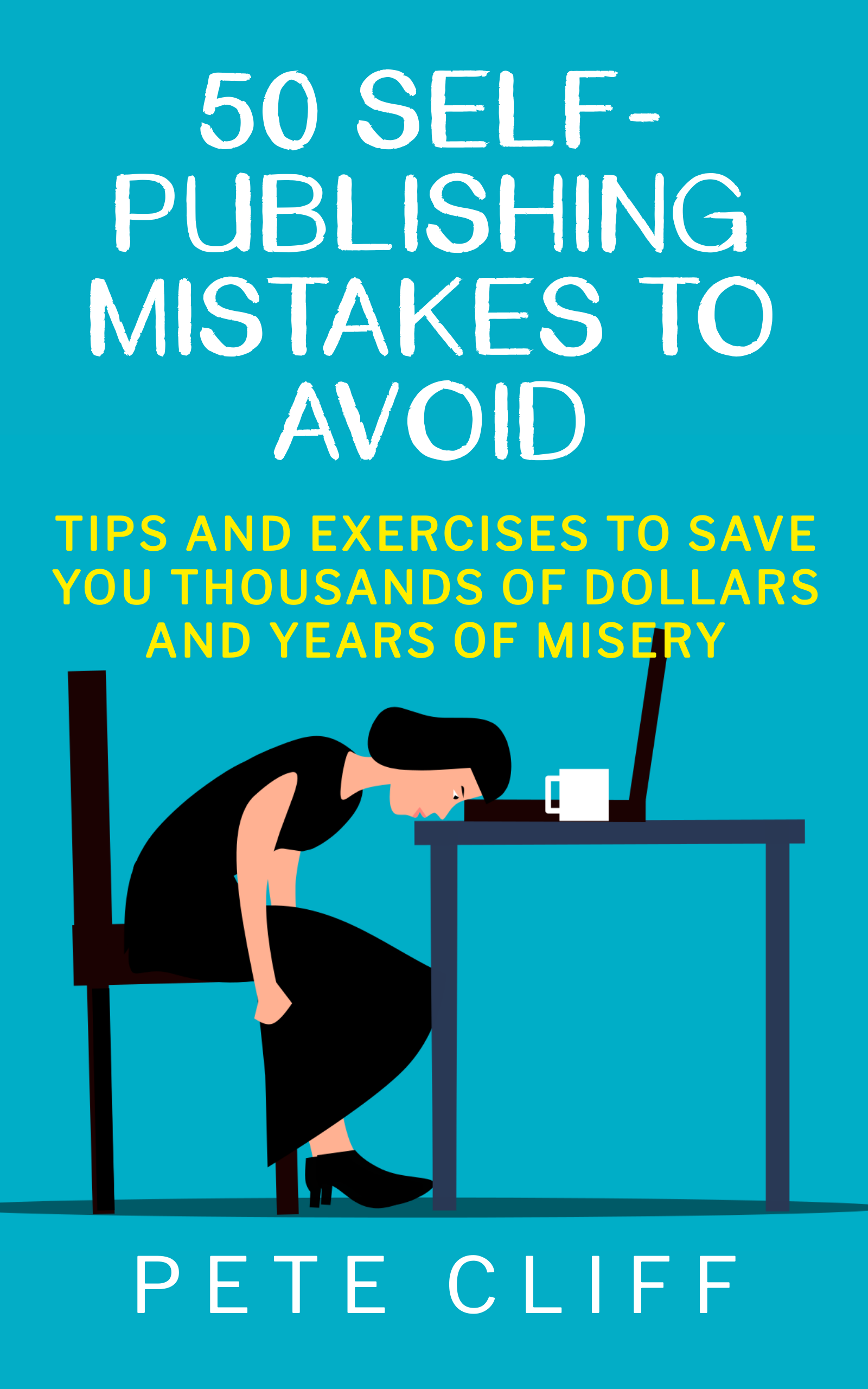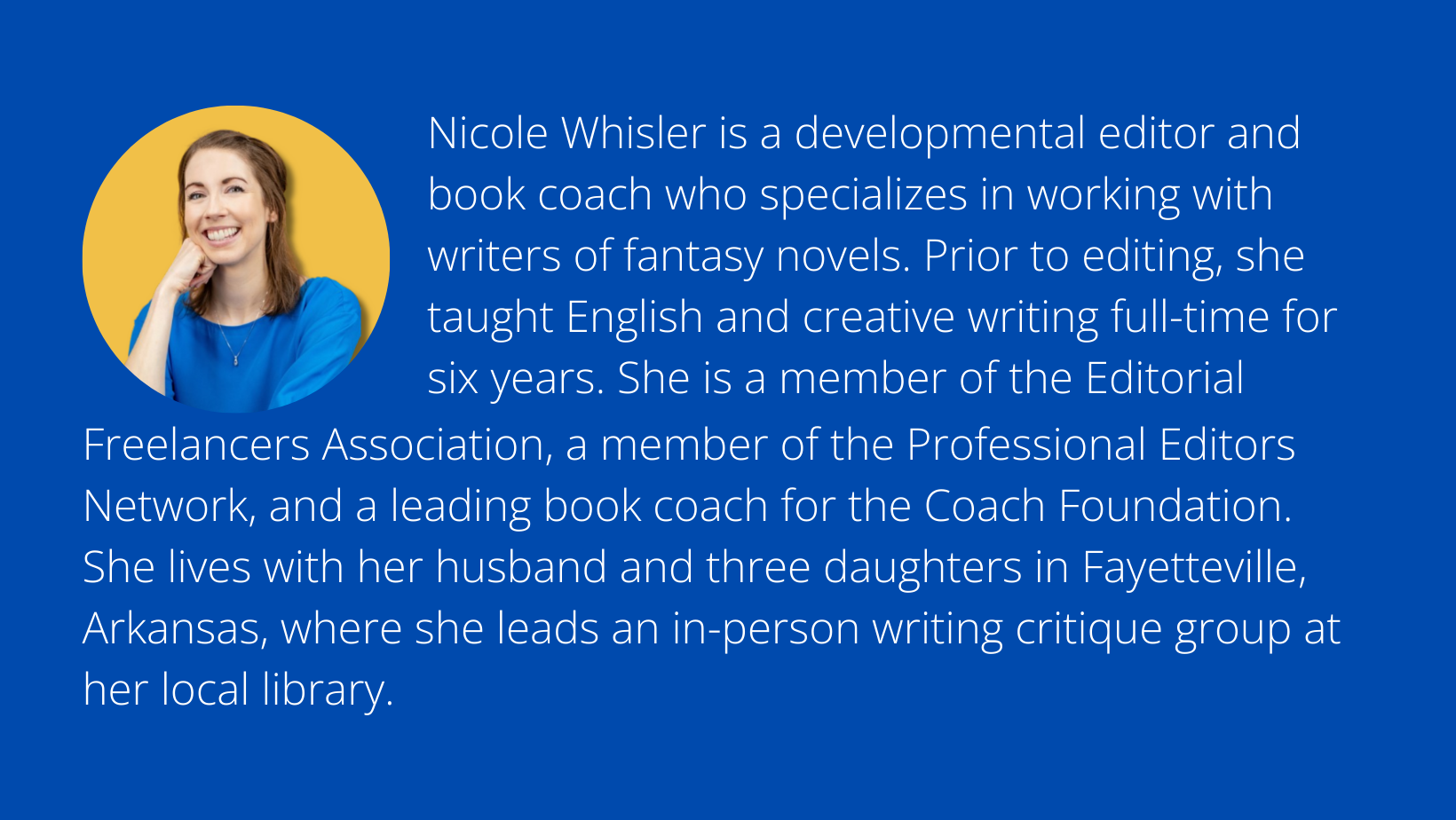Whisler Edits Blog

Self-Publishing Tips to Save You Thousands of Dollars and Years of Misery: Interview with Pete Cliff
Discover in this post …
the biggest mistake a multi-award-winning indie author made in his early writing career—and how he fixed it.
items to avoid when planning and writing your novel.
items to avoid when revising and launching your novel.
In this post, I interviewed Pete Cliff, a multi-award-winning, internationally selling indie author with ten published books (most of which are under the name P.C. Darkcliff). He told me he's no stranger to mistakes when it comes to writing and publishing. During his early career, he struggled to finish badly plotted novels. Then he wrote good novels but marketed them to the wrong audience. He wasted thousands of dollars on disastrous advertising campaigns and mostly useless courses.
Having spent years in the self-publishing trenches, he’s excited to share his hard-learned lessons with newbie authors to help them along their writing journey.

Nicole - Thanks for agreeing to this interview, Pete! Your new book on self-publishing, 50 Self-Publishing Mistakes to Avoid, came out on June 25. What inspired you to take a break from your epic fantasy books to write this one?
Pete - Thanks for having me, Nicole, I’m happy to be here! It kind of started as a joke. I was talking to a writer friend about all the blunders I’d made, and I said they were enough for a book. And he was like, “Wow, you should go for it!” and so I did. Some people say that this kind of book might generate more profit than my fiction books. Let’s see if it’s true!
Nicole - What do you feel is the biggest success of your author career so far? Where are you now compared with where you started?

Pete - I can’t really pinpoint one thing, but so far, I’ve had my biggest success with the epic fantasy series I recently finished: The Magic Circle. At least, now I see an everyday movement on my sales dashboard, and I make a three-figure monthly income. It’s not enough to retire, of course, but it’s much better than what I was making with my previous series. I’ve learned from my errors, and I hope that others will do the same. That’s why I wrote 50 Mistakes.
Nicole - What’s the biggest mistake you made in your early writing career, and how did you go about fixing it?
Pete - I’ve got quite a few to choose from, but I guess the biggest one was pantsing, i.e. not plotting my books. I spent years and years working on a draft that really had no plot and went nowhere, and which I never finished. Then I started outlining my books chapter by chapter (more on that in Chapter 12 of 50 Self-Publishing Mistakes to Avoid) and now I can finish the first draft in a few weeks.
Nicole - Let’s dive into some of the mistakes you’ve written about in your book. Your advice is organized into seven categories: Preparation, The First Draft, Revisions, Pre-Launch, Launch, Post-Launch, and Sequels. Although your full book explores each category in depth, can you give us a single piece of advice from each of the seven sections?
Pete - Sure!
1: Preparation
I mention eleven mistakes in that section, but the gravest is planning a standalone novel. An indie writer needs to have a long backlist and establish a brand before royalties start to trickle in, and it’s very hard to do with a bunch of disconnected novels. If you have a series, you can do cool stuff like offer Book 1 at a discounted price to attract new readers, put the installments into a box set or an omnibus for extra profit, or write a prequel novella to get people to join your mailing list. More on that in my book. ;)
2: The First Draft
I’ve already mentioned plotting the draft carefully, and the second most important thing is to keep your target readers firmly in mind and make sure you meet their expectations. Remember that many people read by subgenre, and each subgenre has its characteristics readers expect to see over and over again. Basically, give people a fresh and original story, but stick to the good old tropes of the genre.
3: Revisions
The tip that can save new writers most time is this: don’t write the second draft from scratch. If you plotted your novel carefully, and if you created strong characters, the first draft only needs tweaking and polishing that you can do right on the screen. I used to print the first draft out, underline weak spots, make notes on the margins, and then rewrite the whole thing. It took me months and didn’t add anything to the story. You need to offer readers a tight, polished story, but rewriting is a waste of time.
4: Pre-Launch
Don’t cheap out on the cover. Contrary to the popular saying, people do judge a book by its cover because that’s the first thing they see. You can have the best book in the world, but if the packaging is cheap or unprofessional, nobody will ever open it. There is a good reason why full-time writers spend more than $1,000 on each cover. You don’t need to spend as much, but you do need to budget for the packaging. The cover, the title, and the blurb must be top-notch, or your book will never take off.
5: Launch
Don’t launch your book and then start looking for its audience. Do it the other way around.
6: Post-Launch
If your book is Amazon-exclusive, take advantage of free promotions. As I mentioned in 50 Mistakes, I made my box set free for several days, paid a measly $10 to a promoter for mentioning the book in its daily email, and since then I’ve got a lot of reviews and my sales have increased.
7: Sequels
Do not only plot the installments. Make sure you have an idea where the series is going in general because if you don’t, you might write yourself into a corner, just like yours truly.
Nicole - Those are excellent ways to save indie writers time, effort, and money. If they follow your advice, how long should authors expect it to take before they start making a profit in their writing career?
Pete - Oooh, that’s a very difficult question! It all depends on their luck, talent, marketing skills, the speed at which they publish their books, and the genre they write in. As I mentioned before, you need a long backlist before you break even. There are no shortcuts, and to be honest, in many cases, self-publishing can be an expensive hobby rather than a daily bread. But I do believe that my book can save people lots of time because it deals with all stages of self-publishing and each chapter includes an exercise that makes the process easier and faster.
Nicole - What do you like best about being an author? And what would you say to someone who’s in love with writing but worried they won’t be able to get their author career off the ground?
Pete - I’ve been writing since I was a kid, and it’s part of my life. I love creating new characters and giving them lives and souls, and building new realms and populating them with fantastic creatures and races. Of course, I’m really needy, so perhaps the best thing is getting positive feedback from my readers. I’m happy to say that lately there’s been lots of it.
If you worry about your career, you need to know the dos and don’ts. My book on 50 Mistakes might be a good start, but there are many other books on self-publishing and marketing.
Nicole - What are your future writing plans? Will you return to your epic fantasy?

Pete - I had a lot of fun writing 50 Mistakes, and I’m thrilled that so many writers have found it useful. Helping fellow writers is immensely satisfying but right now, I don’t have ideas for more nonfiction books.
I’m working on a new epic fantasy series, Shattered Empire. I’ve drafted the prequel novella, Realm of Steel and Fire, and the series opener, Of Ashes and Blood. Then I’ll draft Books 2 and 3 so I can rapid release the series in 2025.
Nicole - Thanks for your time! What’s the best way readers and writers can connect with you and find your books?

Pete - Thank you for the opportunity! 50 Self-Publishing Mistakes to Avoid is available on Amazon, and this link will take you to your local store.
In case you like epic fantasy, you can check out my finished series.
You can also reach me at [email protected] or join my FB group, The Writer’s Den.
Anyone with questions or comments, I’d love to hear from you!
Has this interview encouraged you to move forward with your self-publishing goals? Or pick up a copy of 50 Mistakes? Have you made any of the above mistakes yourself? I'd love for you to email me at [email protected] or message me on Facebook to let me know!
Do you want to learn how to write a story that makes your target readers stand up and cheer? If you’d like support from A to Z (from brainstorming to drafting to revising to publication), book a Discovery Call with me to see if you’re a good fit to join my book coaching program, Fantasy Footsteps: Road to Publication. And if you haven’t done so already, grab your Free Guide on how to hook readers from your story’s start!

